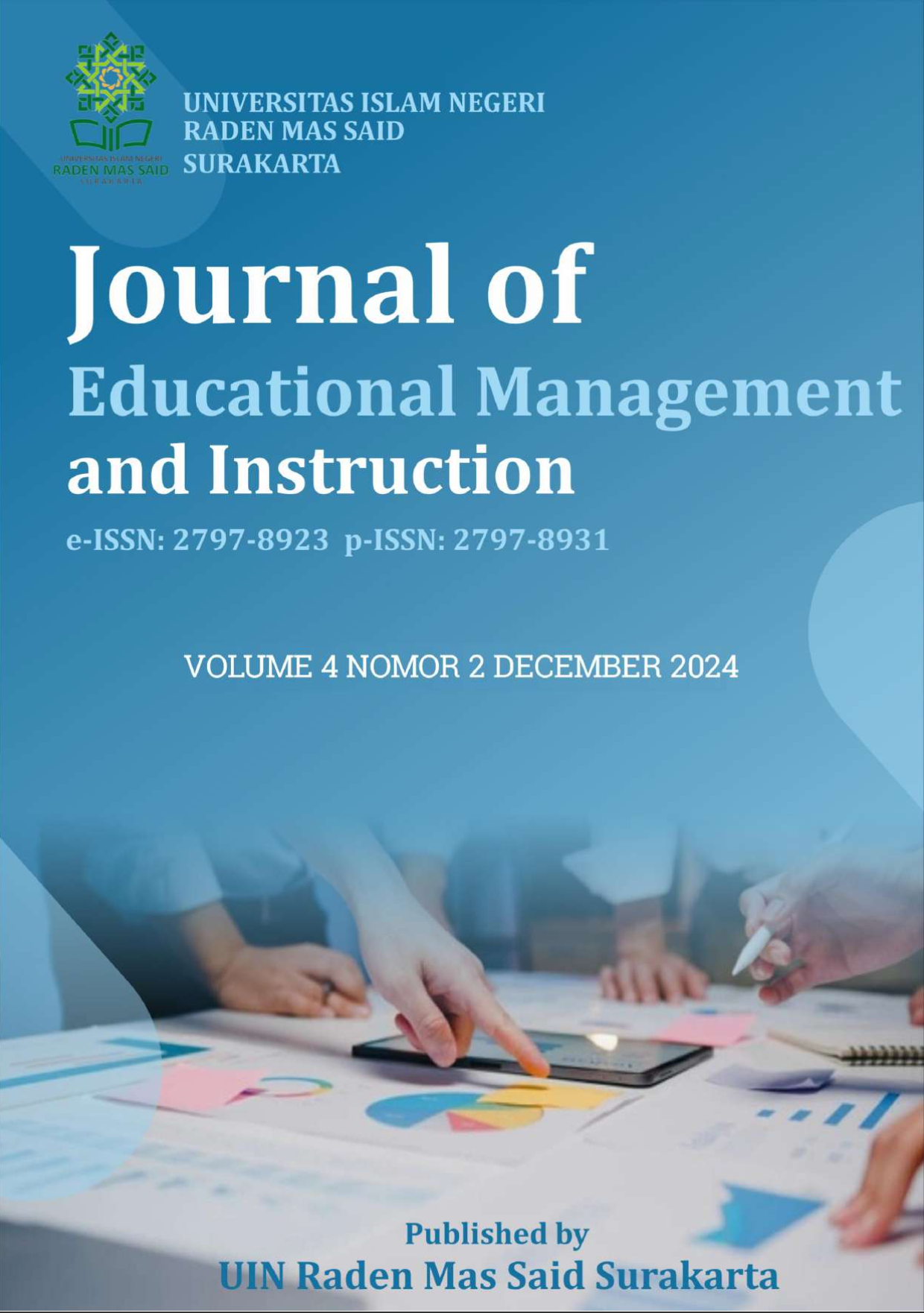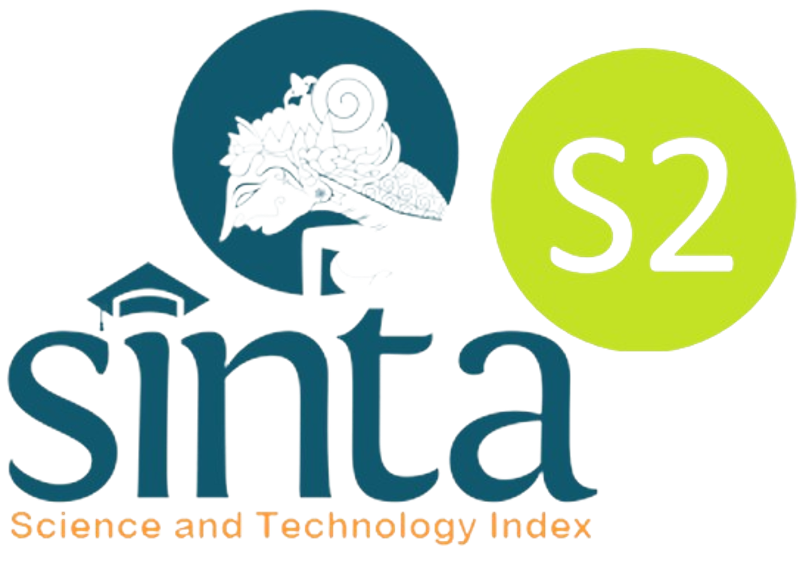Students’ thinking process in solving Pythagoras problems: Piaget’s theory in adversity quotient
DOI:
https://doi.org/10.22515/jemin.v4i2.9692Keywords:
Adversity Quotient, Pythagoras Problems, Students’ Thinking ProcessAbstract
Mathematics involves abstract concepts that require more than memorization; it demands a deep-thinking process for true understanding. This study aims to analyze and describe the thinking processes of students in solving problems related to the Pythagorean theorem, using Jean Piaget's theory in the context of Adversity Quotient (AQ). The research design is qualitative, employing a descriptive approach. The participants were 32 eighth-grade students from SMP Negeri 2 Ngawi, East Java province, Indonesia in the 2022/2023 academic year, categorized into three AQ groups: quitters, campers, and climbers. Data collection methods included the Adversity Response Profile (ARP) questionnaire, think-aloud tests, and interviews. The data were analyzed following Miles and Huberman’s model, which involves data reduction, presentation, and conclusion drawing. The results indicate: (1) Quitters displayed both assimilation and accommodation in understanding and planning problem-solving strategies, but relied on assimilation during problem-solving and review; (2) Campers primarily engaged in assimilation throughout understanding, planning, solving, and reviewing; (3) Climbers used assimilation for understanding, planning, and reviewing, but employed both assimilation and accommodation during problem-solving execution. These findings suggest that students' AQ levels influence their cognitive processes in mathematics problem-solving, with higher AQ individuals demonstrating greater flexibility in their thinking. This has implications for educators seeking to tailor instructional approaches to students' adversity responses, enhancing both cognitive development and resilience in learning.
Downloads
References
Aulia, N. N., Usodo, B., & Saputro, D. R. S. (2020). The Level of Aspects of CO2RE (Control, Origin and Ownership, Reach, Endurance) in Camper Students. International Journal of Multicultural and Multireligious Understanding, 7(1), 815-820. http://dx.doi.org/10.18415/ijmmu.v7i1.1413
Awalludin, S. A. (2024). Analysis of students mathematical communication ability reviewed from adversity quotient during the covid-19 pandemic. EduMatSains: Jurnal Pendidikan, Matematika dan Sains, 8(2), 228-243. https://doi.org/10.33541/edumatsains.v8i2.5582
Babakr, Z., Mohamedamin, P. & Kakamad, K. (2019), Piaget’s Cognitive Developmental Theory: Critical Review. International Journal Education Quarterly Reviews, 2(3), 517-524. https://doi.org/10.31014/aior.1993.02.03.84
Dewi, F. C., & Wutsqa, D. U. (2024). A Literature Review Regarding the Position of Adversity Quotient in Mathematics Learning. International Journal of Multicultural and Multireligious Understanding, 11(8), 630-640. http://dx.doi.org/10.18415/ijmmu.v11i8.6109
Fahrudin, F. A., Sa'Dijah, C., Hidayanto, E., & Susanto, H. (2024). Student’s Reversible Thinking Processes: An Analysis Based on Adversity Quotient Type Climbers. Qualitative Research in Education, 13(1), 19-42. https://doi.org/10.17583/qre.11964
Fatimah, A. E. (2020). Upaya Peningkatan Kemampuan Pemecahan Masalah Matematis Siswa SMP Melalui Model Pembelajaran Kooperatif Tipe STAD. Journal of Didactic Mathematics, 1(1), 33–40. https://doi.org/10.34007/jdm.v1i1.156
Fitriana, H., & Waswa, A. N. (2024). The Influence of a Realistic Mathematics Education Approach on Students' Mathematical Problem Solving Ability. Interval: Indonesian Journal of Mathematical Education, 2(1), 29-35. https://doi.org/10.37251/ijome.v2i1.979
Fitriati, F., Rosli, R., Iksan, Z., & Hidayat, A. (2024). Exploring challenges in preparing prospective teachers for teaching 4C skills in mathematics classroom: A school-university partnership perspectives. Cogent Education, 11(1), 2286812. https://doi.org/10.1080/2331186X.2023.2286812
Fülöp, E. (2015). Teaching problem-solving strategies in mathematics. LUMAT: International Journal on Math, Science and Technology Education, 3(1), 37-54. https://doi.org/10.31129/lumat.v3i1.1050
Hidarya, I., Mudrikah, A., & Sauri, R. S. (2020). Implementation of Regulation of The Minister of Religion Number 2 of 2012 for Islamic Education Supervisers at Schools in The Department of Education in Sukabumi Regency. International Journal of Nusantara Islam, 8(2), 226-239. https://doi.org/10.15575/ijni.v8i2.11082
Jannah, M., El Hakim, L., & Sovia, A. (2023). Analysis of Underachiever Students' Mathematical Problem-Solving Ability on The Topic Circle Viewed from Adversity Quotient. Journal of Medives: Journal of Mathematics Education IKIP Veteran Semarang, 7(2), 256-268. https://doi.org/10.31331/medivesveteran.v7i2.2616
Jatmiko, D., Andriana, L., Pambudi, D., Trapsilasiwi, D., & Hussen, S. (2023). Proses Berpikir Kreatif Siswa dalam Pemecahan Masalah Open-Ended Berdasarkan Teori Wallas Ditinjau dari Adversity Quotient. Jurnal Cendekia : Jurnal Pendidikan Matematika, 7(1), 340-349. https://doi.org/10.31004/cendekia.v7i1.1993
Khalid, M., Saad, S., Hamid, S. R. A., Abdullah, M. R., Ibrahim, H., & Shahrill, M. (2020). Enhancing creativity and problem-solving skills through creative problem solving in teaching mathematics. Creativity Studies, 13(2), 270-291. https://doi.org/10.3846/cs.2020.11027
Lailiyah, S., & Kurlillah, F. A. (2023). Student’s ways of thinking and ways of understanding analysis in solving mathematics problems in term of adversity quotient. Beta: Jurnal Tadris Matematika, 16(2), 151-171. https://doi.org/ 10.20414/betajtm.v16i2.567
Lester Jr, F. K., & Cai, J. (2016). Can mathematical problem solving be taught? Preliminary answers from 30 years of research. Posing and solving mathematical problems: Advances and new perspectives, 117-135. https://doi.org/10.1007/978-3-319-28023-3_8
Maryanti & Qadriah, L. (2021). Proses Berpikir Siswa SMA Dalam Memecahkan Masalah Matematika Berdasarkan Langkah-Langkah Polya Ditinjau Dari Adversity Quotient. JSH: Jurnal Sosial Humaniora Sigli, 4(1), 16-27. https://doi.org/10.47647/jsh.v4i1.441
Mcleod, S. (2018). Jean Piaget’s Theory of Cognitive Development Schemas. International Journal Developmental Psychology, Simply Psychology, 1936, 1–9. https://www.simplypsychology.org/piaget.html
Miles, M. B. (1994). Qualitative data analysis: An expanded sourcebook. Thousand Oaks.
Na’imah, V., Qomaria, N., Munawaroh, F., Yasir, M., & Rendy, D. B. (2022). Proses Berpikir Siswa Dalam Memecahkan Masalah Pada Materi Tekanan Zat Berdasarkan Adversity Quotient. Jurnal Natural Science Educational Research, 5(2), 29-40. https://doi.org/10.21107/nser.v5i2.11581
Pradika, I. D., Amin, S. M., & Khabibah, S. (2019). Relational thinking in problem solving mathematics based on adversity quotient and visual learning style. International Journal of Trends in Mathematics Education Research, 2(4), 161-164. http://ijtmer.saintispub.com/ijtmer/article/view/60
Putra, Z. R. I. A., Rahardi, R., Sisworo, S., & Permadi, H. (2023). Profile of Students’ Argumentation Ability Based on Adversity Quotient In Statistical Problem. Journal of Medives: Journal of Mathematics Education IKIP Veteran Semarang, 7(1), 106-116. https://doi.org/10.31331/medivesveteran.v7i1.2330
Putri, Y., Huda, N., & Yantoro, Y. (2021). Analysis of concept construction errors in mathematical problem solving based on the assimilation and accommodation framework in terms of student learning styles. Desimal: Jurnal Matematika, 4(3), 295-304. http://dx.doi.org/10.24042/djm.v4i3.9752
Putri, N. M., Sumaji, S., & Purwaningrum, J. P. (2023). Profil kemampuan berpikir kritis matematis siswa ditinjau dari adversity quotient (AQ). Pedagogy: Jurnal Pendidikan Matematika, 8(2), 407-421. https://doi.org/10.30605/pedagogy.v8i2.3134
Rahmawati, A., Warmi, A. & Marlina, R. (2022). Analisis Kemampuan Pemecahan Masalah Matematis Siswa SMP Pada Materi Teorema Pythagoras. Jurnal Cendekia: Jurnal Pendidikan Matematika, 6(01), 365-374. https://doi.org/10.31004/cendekia.v6i1.1012
Sari, C. K., Sutopo, S., & Aryuna, D. R. (2016). The profile of students’ thinking in solving mathematics problems based on adversity quotient. JRAMathEdu (Journal of Research and Advances in Mathematics Education), 1(1), 36-48. https://doi.org/10.23917/jramathedu.v1i1.1784
Silvatama, M. A., Yustika, U. N., Nuriah, D., & Wahyuni, I. (2023). Analisis Kemampuan Berpikir Lateral Siswa Berdasarkan Adversity Quotient (AQ) dalam Pemecahan Masalah Geometri. Indonesian Journal of Science, Technology and Humanities, 1(1), 1-12. https://doi.org/10.60076/ijstech.v1i1.7
Stoltz, P. G. (2005). Adversity quotient. Jakarta: Grasindo.
Swastika, G., Nusantara, T., Subanji, S., & Irawati, S. (2023). How Do Assimilation and Accommodation Occur in The Translation Process of Representation?. Participatory Educational Research, 10(3), 167-190. https://doi.org/10.17275/per.23.50.10.3
Venkatesh, J., & Shivaranjani, G. (2016). Adversity quotient profile: a robust assessment tool to measure human resilience. Asian Journal of Research in Social Sciences and Humanities, 6(6), 412-426. https://doi.org/10.5958/2249-7315.2016.00219.7
Wahyuningtyas, F., Suyitno, H., & Asikin, M. (2020). Students’ s Creative Thinking Skills Viewed by Adversity Quotient and Mathematics Anxiety in Grade VIII. Unnes Journal of Mathematics Education Research, 9(2), 190-198. https://journal.unnes.ac.id/sju/ujmer/article/view/33171
Zhang, H., & Cai, J. (2021). Teaching mathematics through problem posing: insights from an analysis of teaching cases. ZDM–Mathematics Education, 53(4), 961-973. https://doi.org/10.1007/s11858-021-01260-3
Downloads
Submitted
Accepted
Published
How to Cite
Issue
Section
License
Copyright (c) 2024 Saskia Rizkiana Putri, Laila Fitriana, Tri Atmojo Kusmayadi

This work is licensed under a Creative Commons Attribution-NonCommercial 4.0 International License.
Copyright
Copyright aims to protect the specific way the article has been written to describe an experiment and the results. Journal of Educational Management and Instruction is committed to its authors to protect and defend their work and their reputation and takes allegations of infringement, plagiarism, ethical disputes, and fraud very seriously. Automotive Experiences is published under the terms of the Attribution-NonCommercial 4.0 International (CC BY-NC 4.0). Authors retain copyright and grant the journal right of first publication (online and print) with the work simultaneously. We use the restrictive license (non-commercial) as follows:
BY (attribution): Users are allowed to share, distribute and redistribute the published article in any medium or format, with an identification of the authors and its initial publication in this journal. Authors are encouraged to post and distribute their articles immediately after publication (e.g., institutional or public repositories, personal websites). Authors are allowed to enter into additional contractual arrangements for the non-exclusive distribution of the published and an acknowledgment of its initial publication in this journal.
NC (non-commercial): Users are not allowed to use the article commercially without the permission of the authors. Authors agree explicitly that the published article is indexed worldwide in databases, repositories and indexation services, even if these services operate on a commercial basis. Authors grant Journal of Educational Management and Instruction explicit the right to include the published articles in databases, repositories and indexation services.
License
License to Publish
The non-commercial use of the article will be governed by the Attribution-NonCommercial 4.0 International (CC BY-NC 4.0). The author hereby grants Journal of Educational Management and Instruction an exclusive publishing and distribution license in the manuscript include tables, illustrations or other material submitted for publication as part of the manuscript (the “Articleâ€) in print, electronic and all other media (whether now known or later developed), in any form, in all languages, throughout the world, for the full term of copyright, and the right to license others to do the same, effective when the article is accepted for publication. This license includes the right to enforce the rights granted hereunder against third parties.
Author's Warranties
The author warrants that the article is original, written by stated author/s, has not been published before, contains no unlawful statements, does not infringe the rights of others, is subject to copyright that is vested exclusively in the author and free of any third party rights, and that any necessary written permissions to quote from other sources have been obtained by the author(s).
User Rights
Under the Creative Commons Attribution-Non Commercial 4.0 International (CC BY-NC 4.0) license, the author(s) and users are free to share (copy and redistribute the material in any medium or format) and adapt (remix, transform, and build upon the material). Users must give appropriate credit, provide a link to the license, and indicate if changes were made.
Rights of Authors
Authors retain the following rights:
- Copyright, and other proprietary rights relating to the article, such as patent rights,
- The right to use the substance of the article in future own works, including lectures and books,
- The right to reproduce the article for own purposes, provided the copies are not offered for sale, and
- The right to self-archive the article.
Co-authorship
If the article was prepared jointly with other authors, the signatory of this form warrants that he/she has been authorized by all co-authors to sign this agreement on their behalf, and agrees to inform his/her co-authors of the terms of this agreement.

























